Abstract
OBJECTIVE: To estimate the effect of Employee Assistance Program (EAP) use on healthcare utilization as measured by health claims. DATA SOURCES: A unique data set that combines individual-level information on EAP utilization, demographic information, and health insurance claims from 1991 to 1995 for all employees of a large midwestern employer. STUDY DESIGN: Using "fixed-effect" econometric models that control for unobserved differences between individuals' propensities to use healthcare resources and the EAP, we perform our analyses in two steps. First, for those employees who visited the EAP, we test whether post-EAP claims differ from pre-EAP claims. Second, we combine claims data of individuals who went to an EAP with those of individuals who did not use an EAP to test whether differences in utilization exist between EAP users and nonusers. DATA COLLECTION METHODS: From the EAP we obtained the date of first EAP contact for all employees who used the service, and from the company's human resources department we obtained limited demographic data on all employees. We obtained healthcare utilization claims data on all employees and their dependents from the company's two healthcare plans: a fee-for-service (FFS) plan and a health maintenance organization (HMO) plan. PRINCIPAL FINDINGS: We found that going to an EAP substantially increases both the probability of an alcohol, drug abuse, or mental health (ADM) claim and the number of ADM claims in the same quarter as EAP contact. The increased probability of an ADM claim persists for approximately 11 quarters after the initial contact, while the increased ADM charges persist for approximately six quarters after the initial EAP contact. CONCLUSIONS: Our results strongly suggest that the EAP is able to identify behavioral and other health problems that may affect workplace performance and prompt EAP users to access ADM and other healthcare. Consistent with the stated goals of many EAPs, including the one examined in this study, this process should improve individuals' health, family functioning, and workplace performance.
Full text
PDF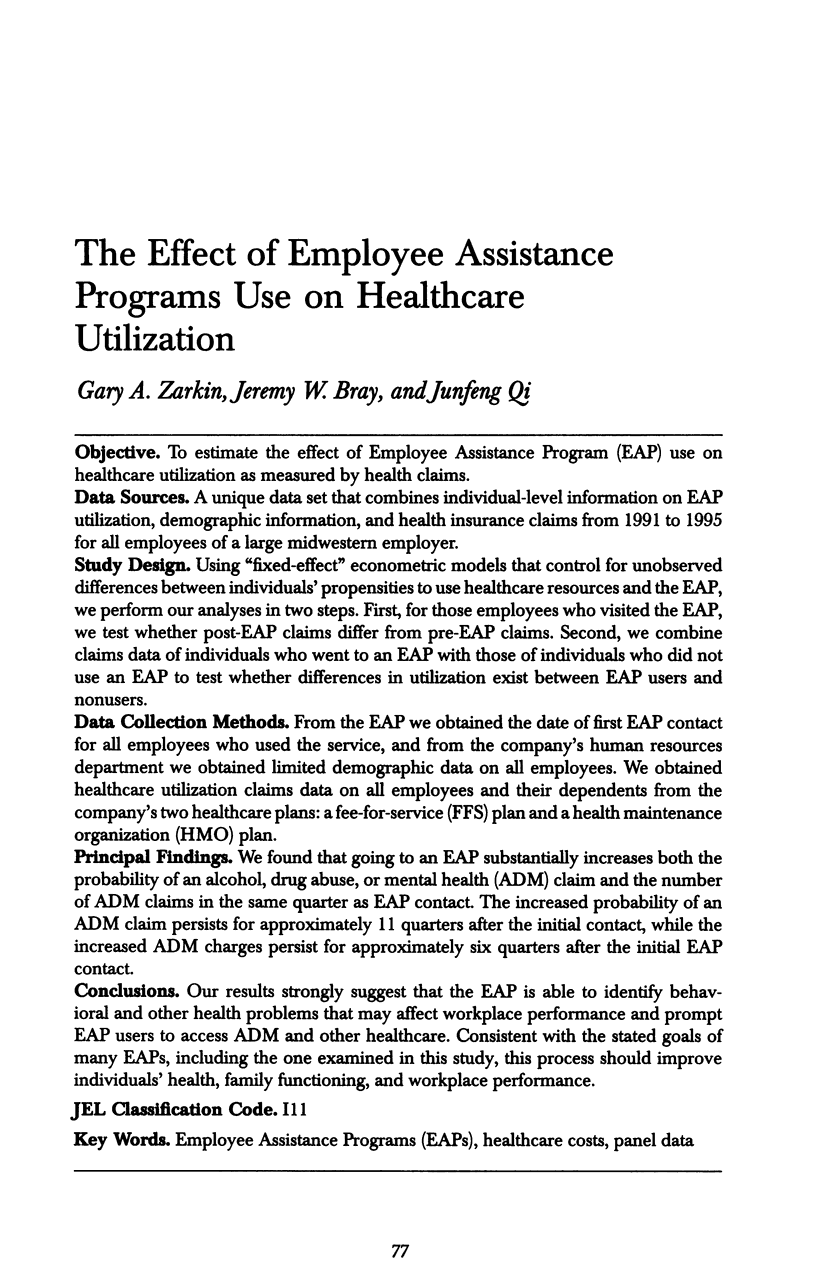
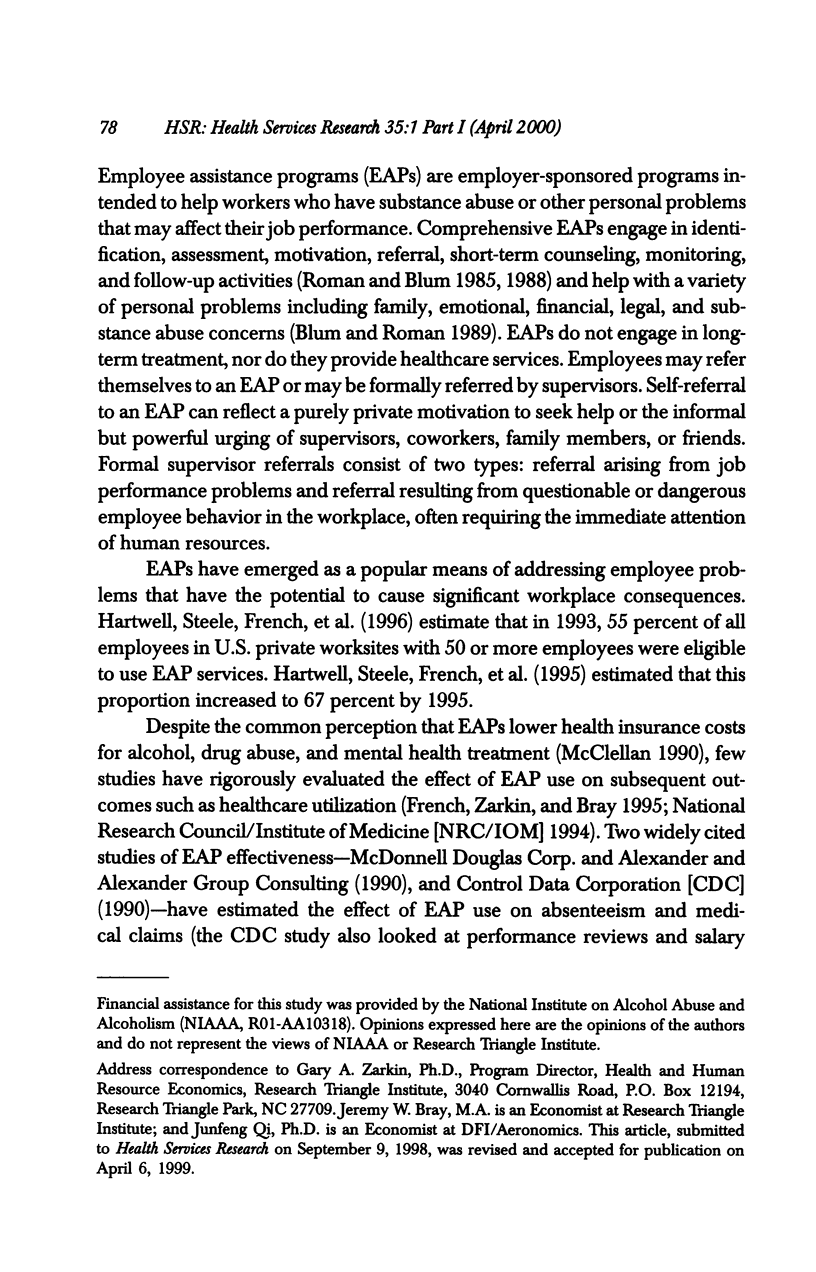
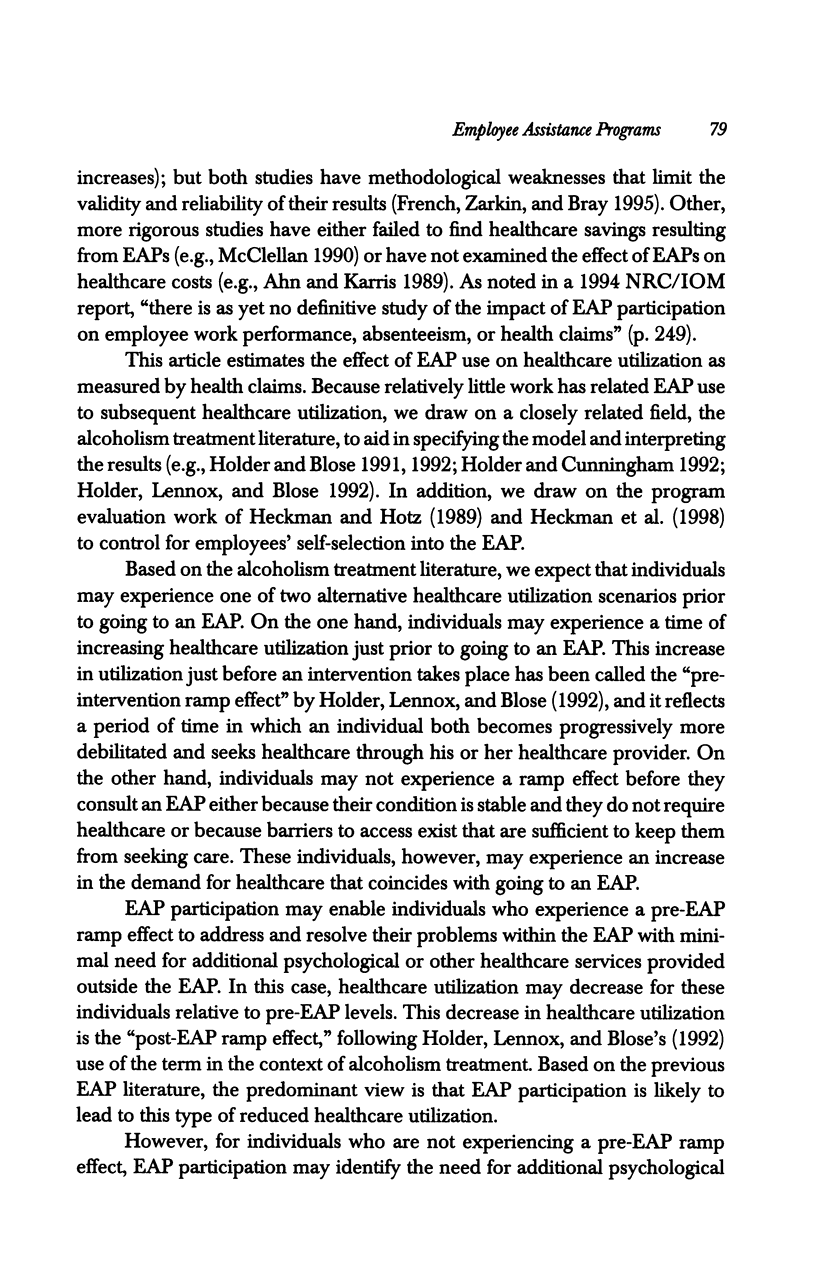
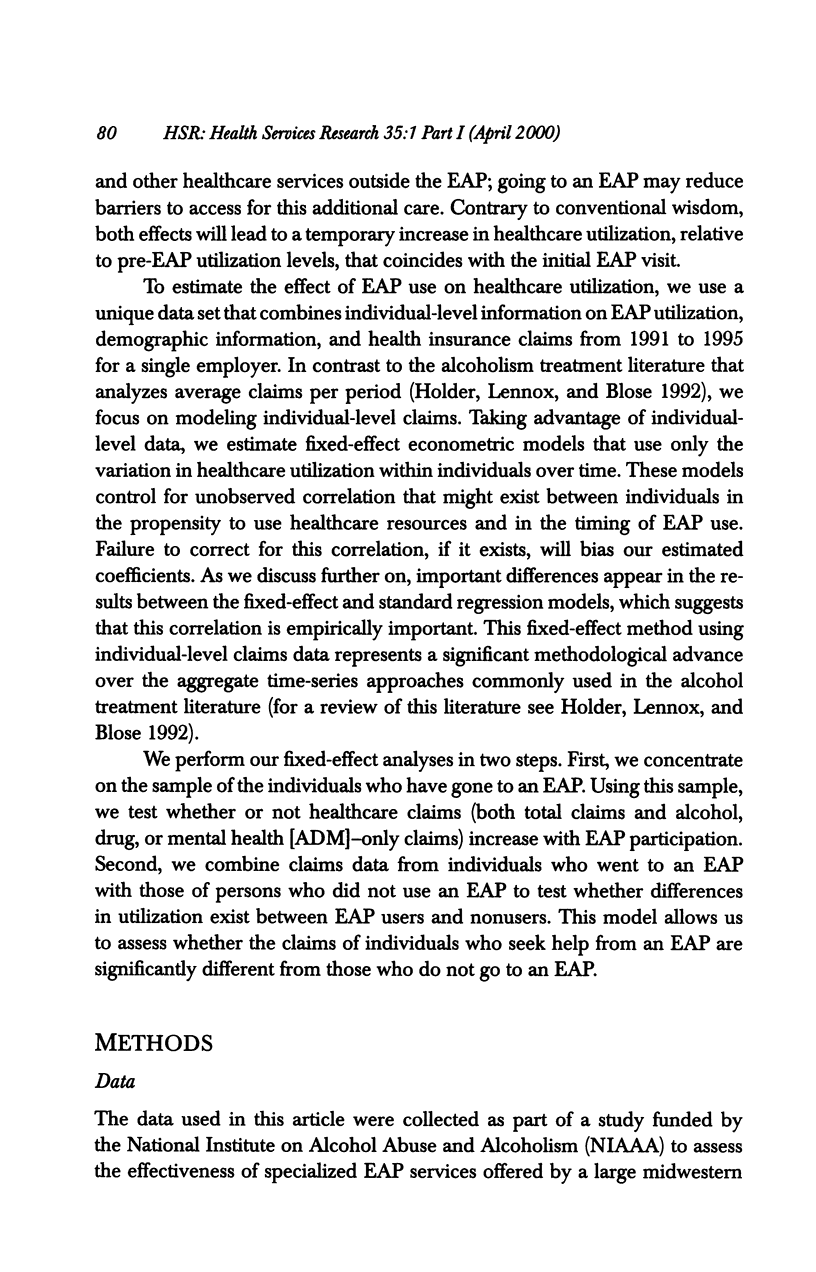
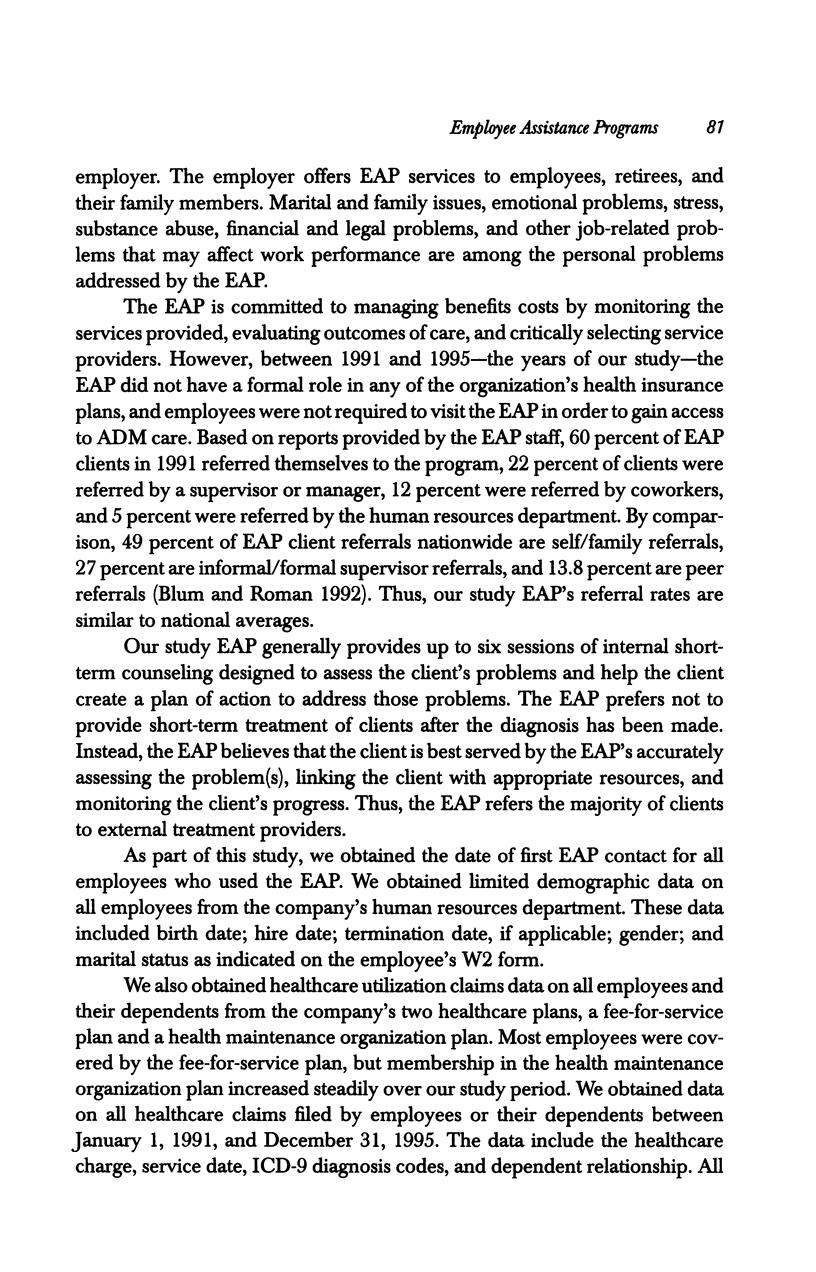

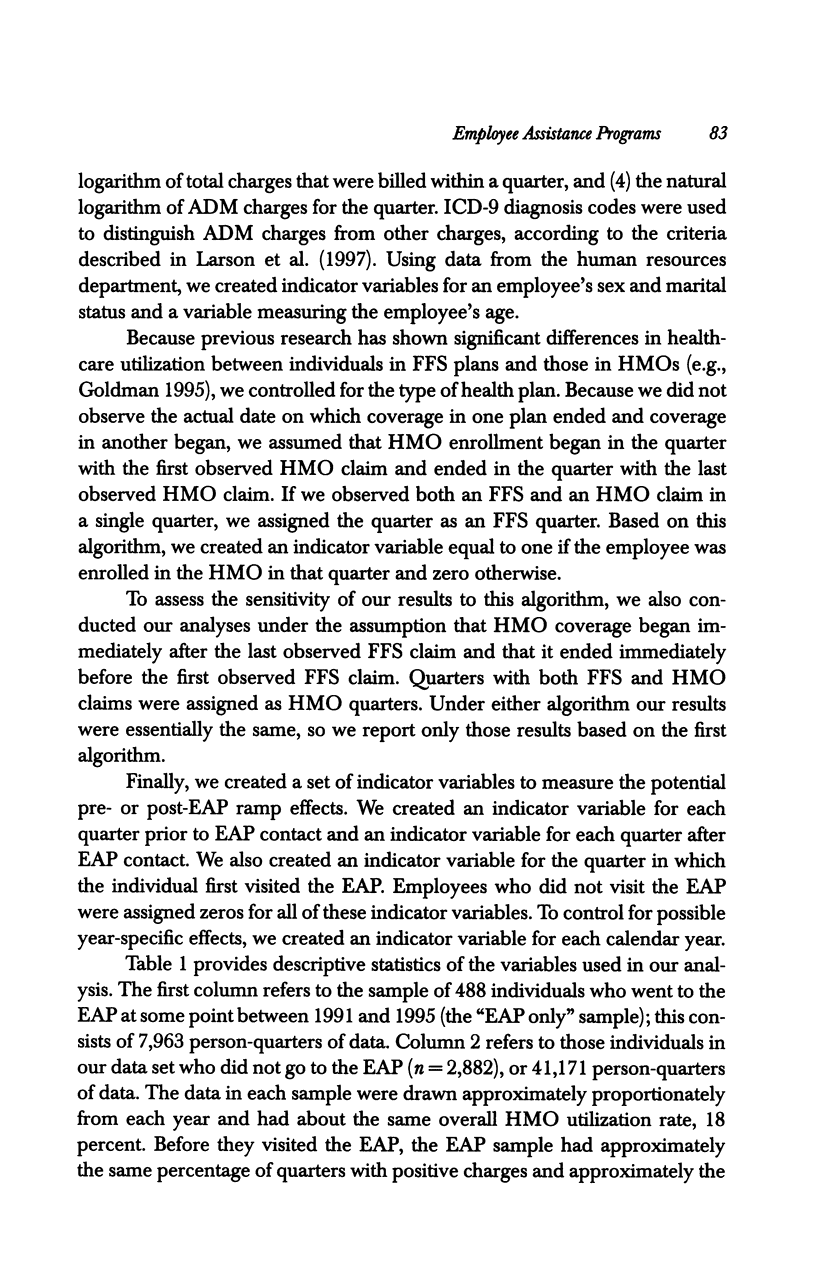
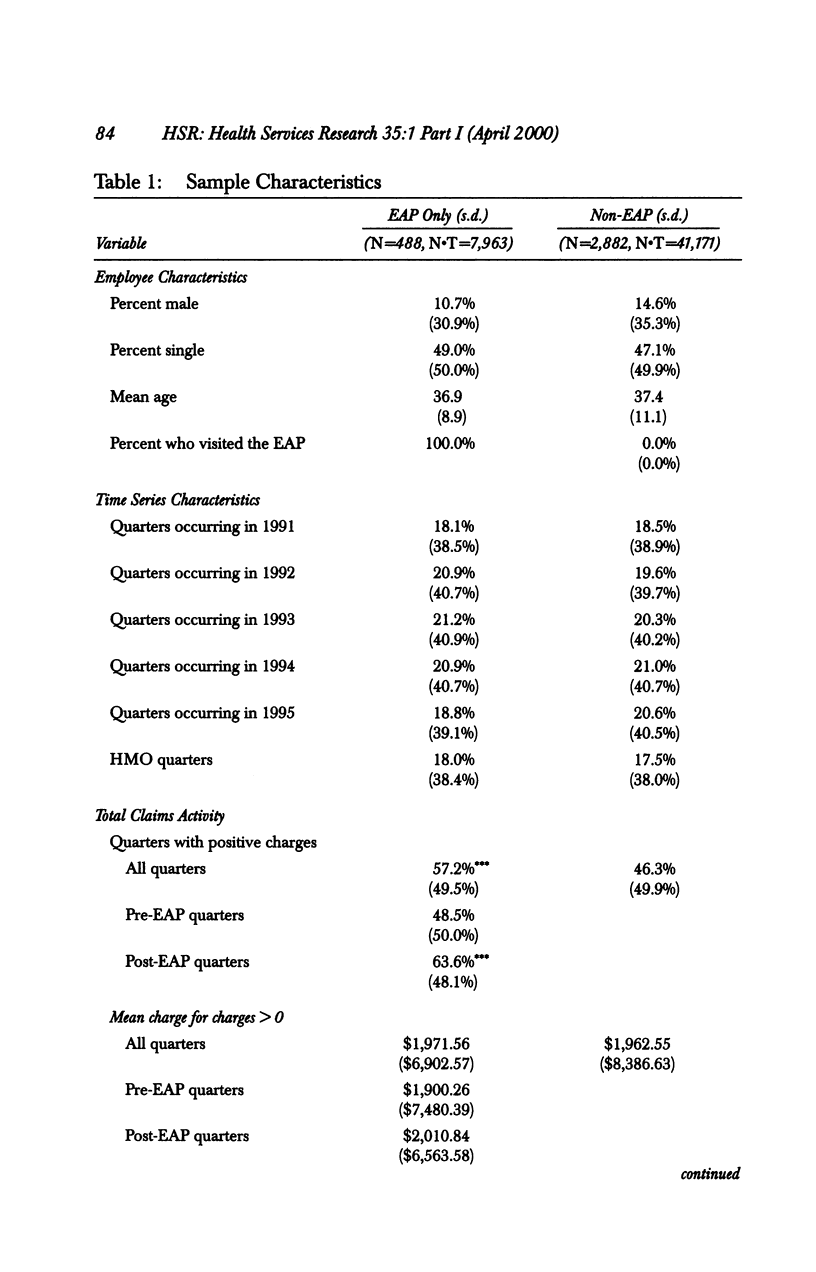



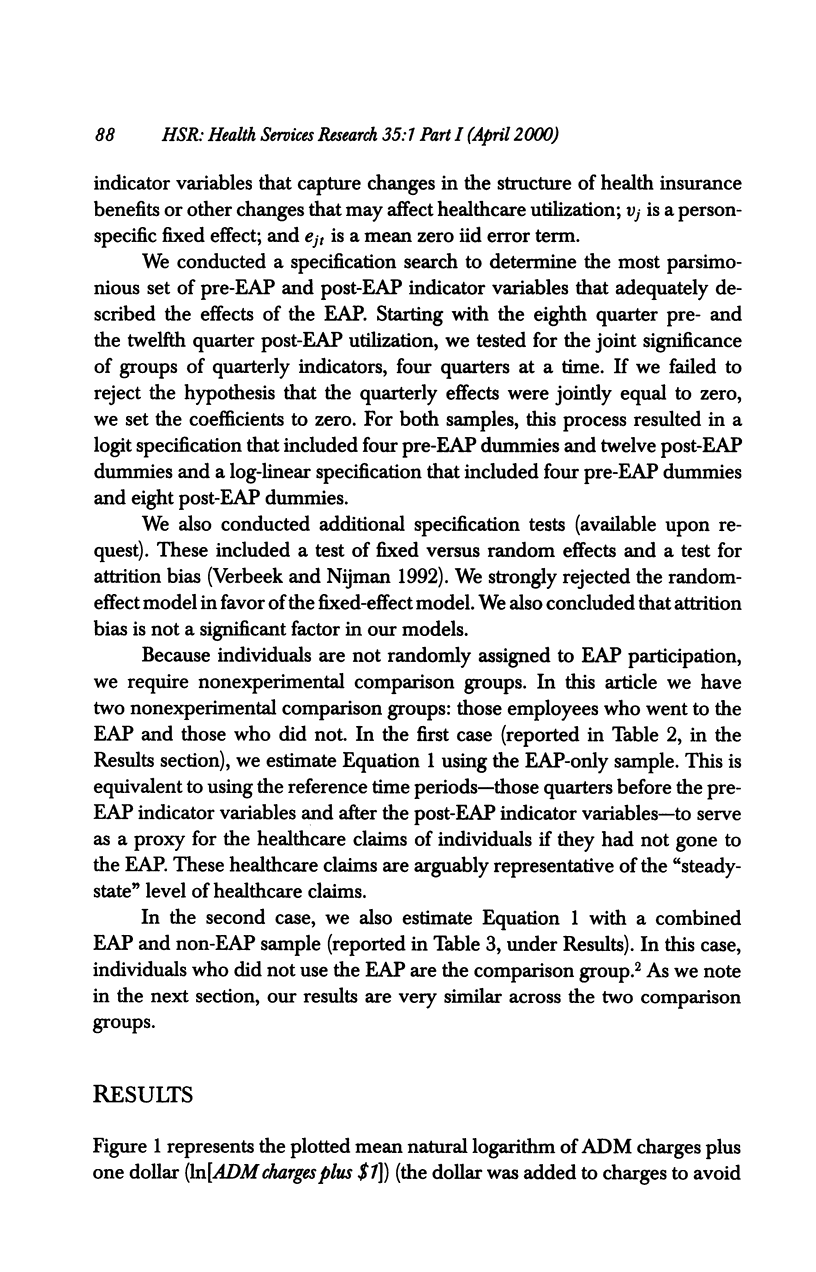
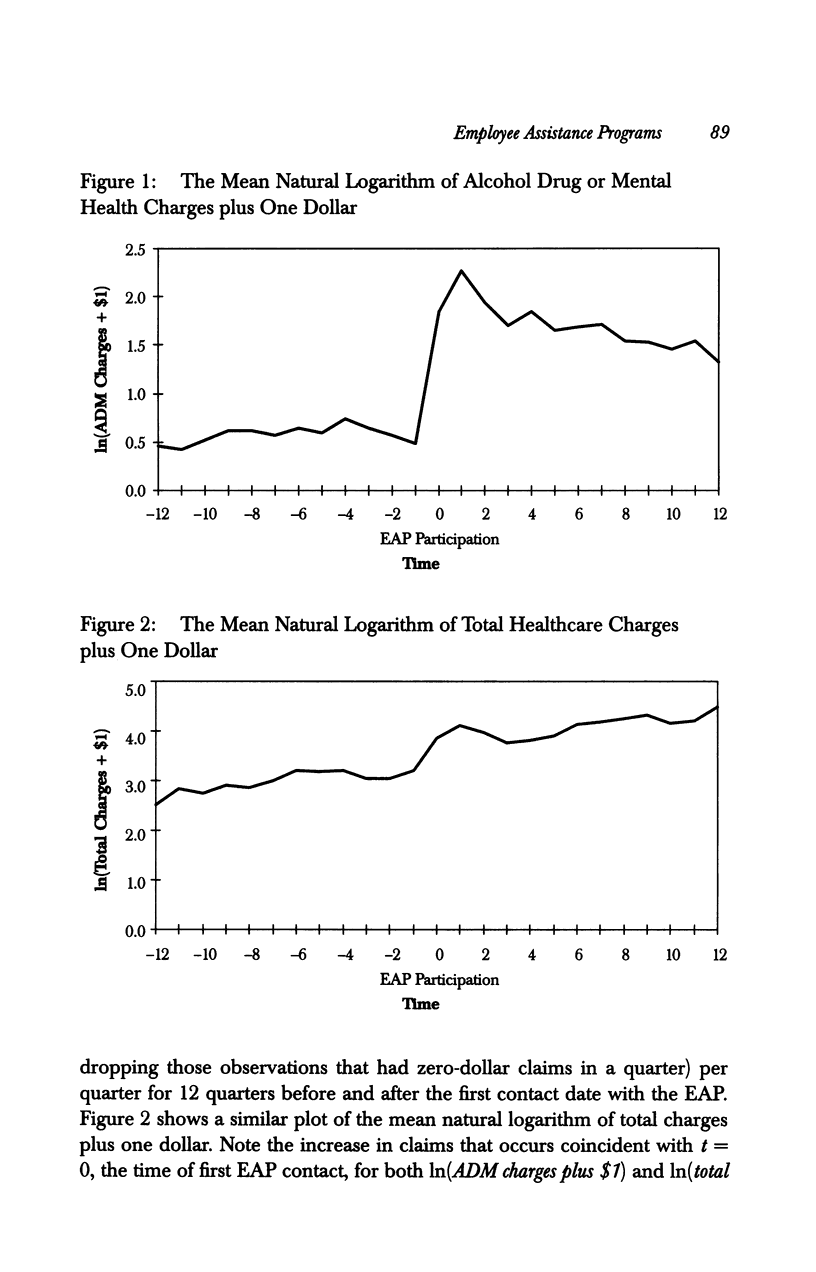
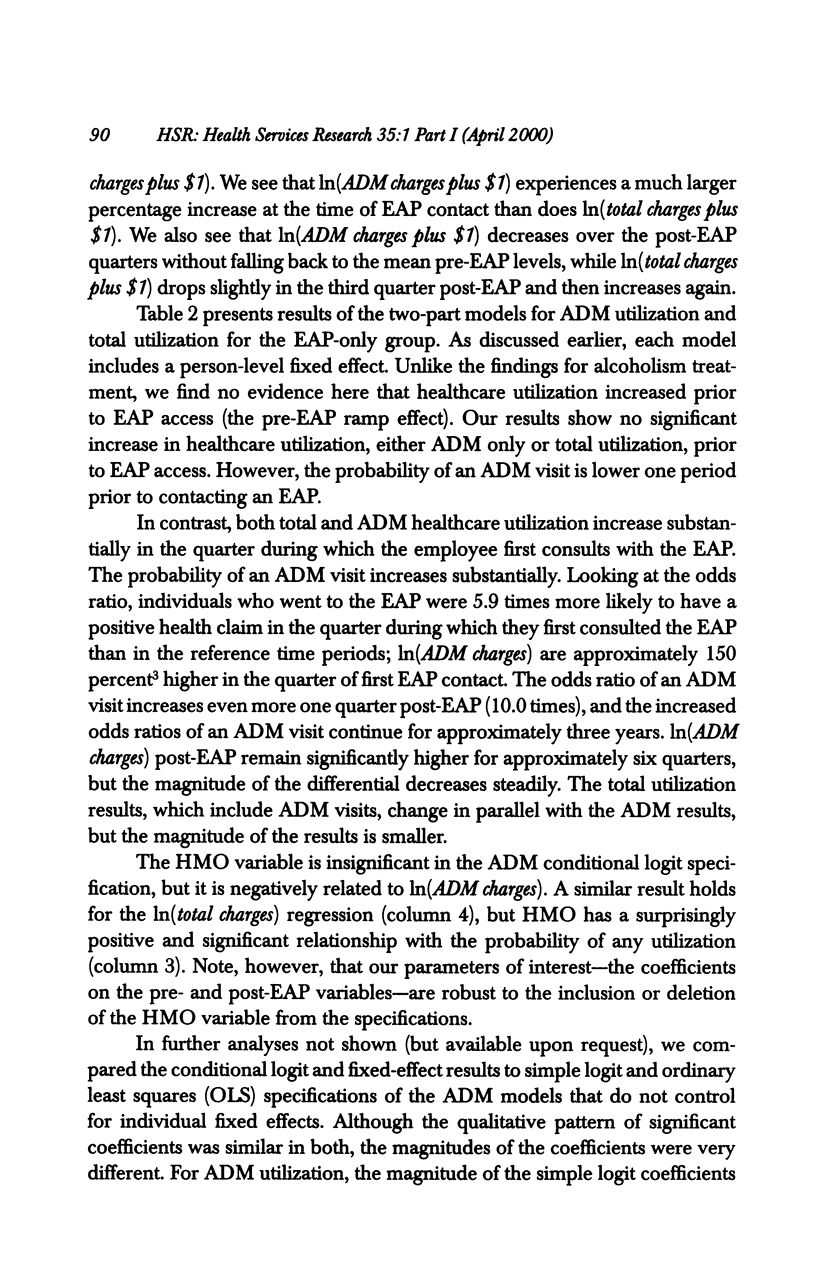
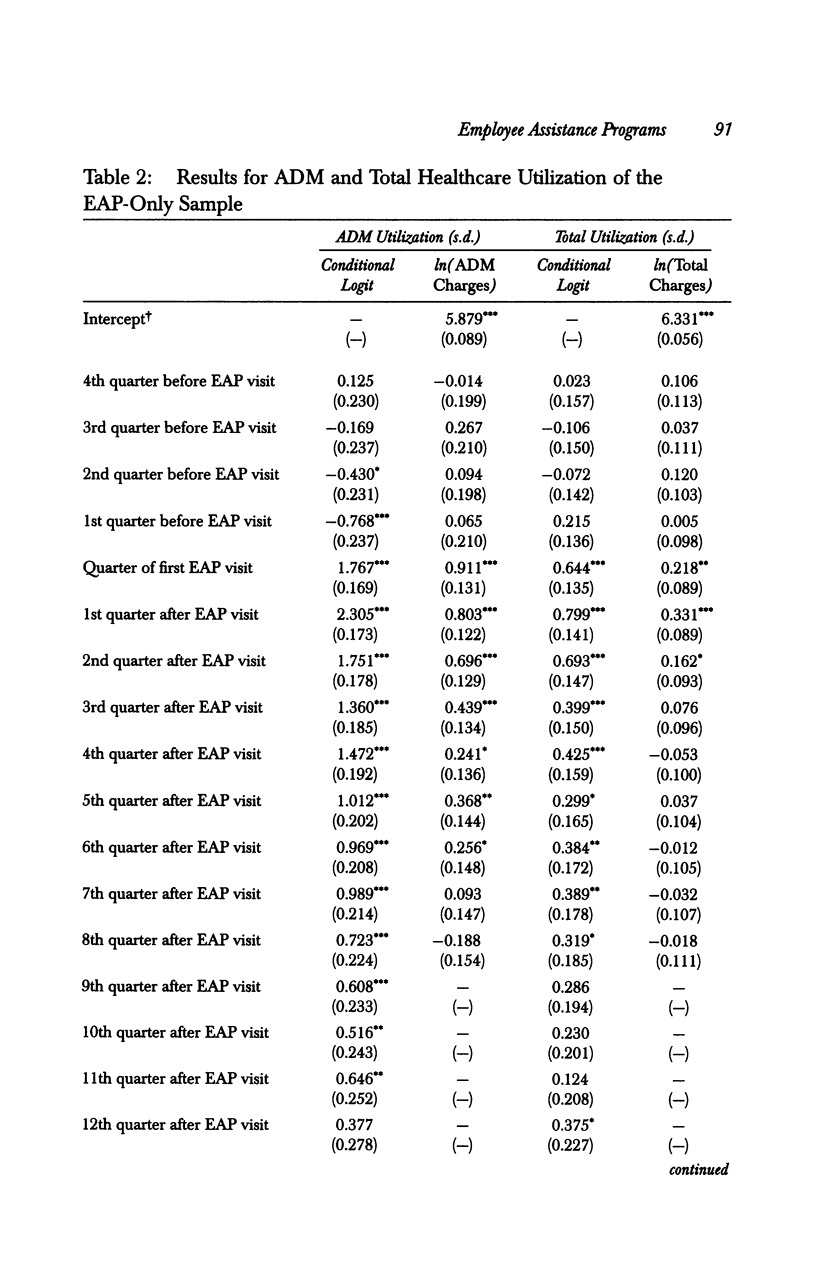
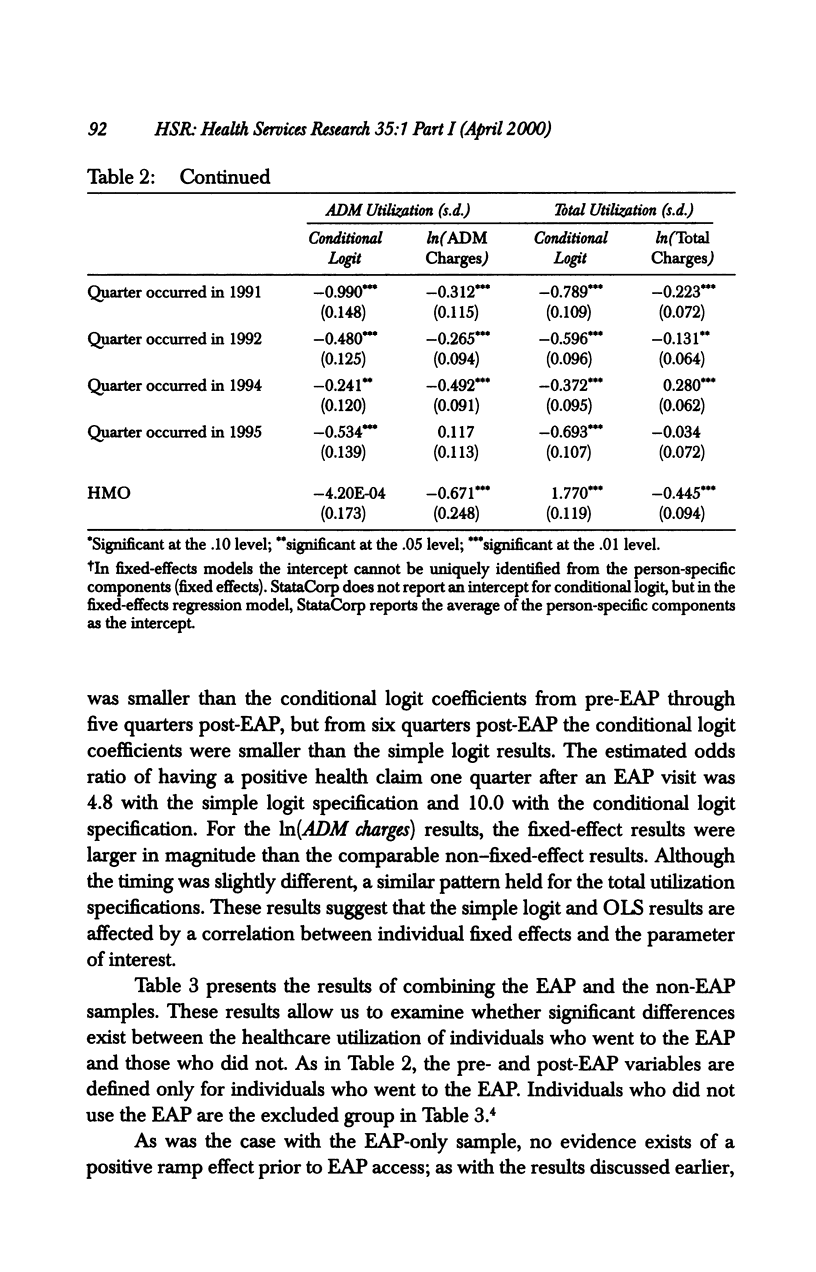

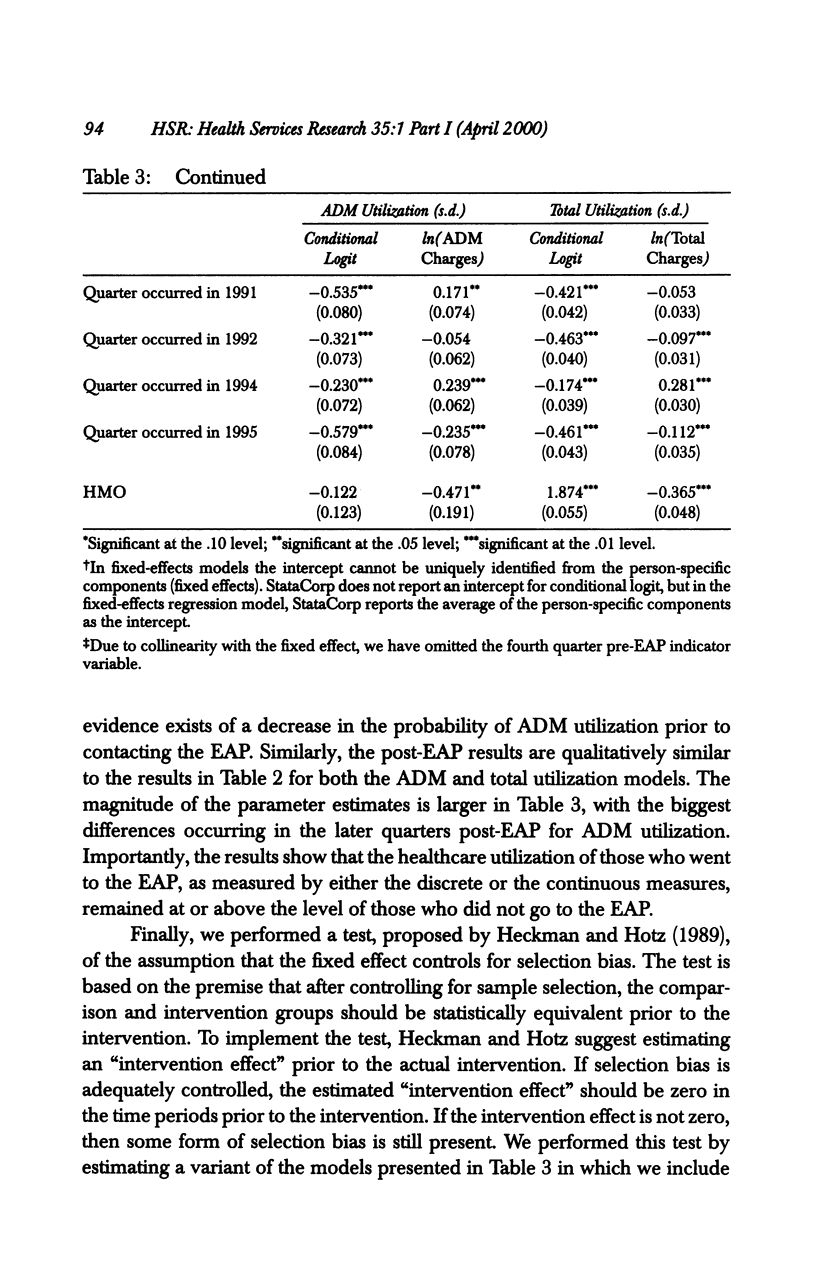
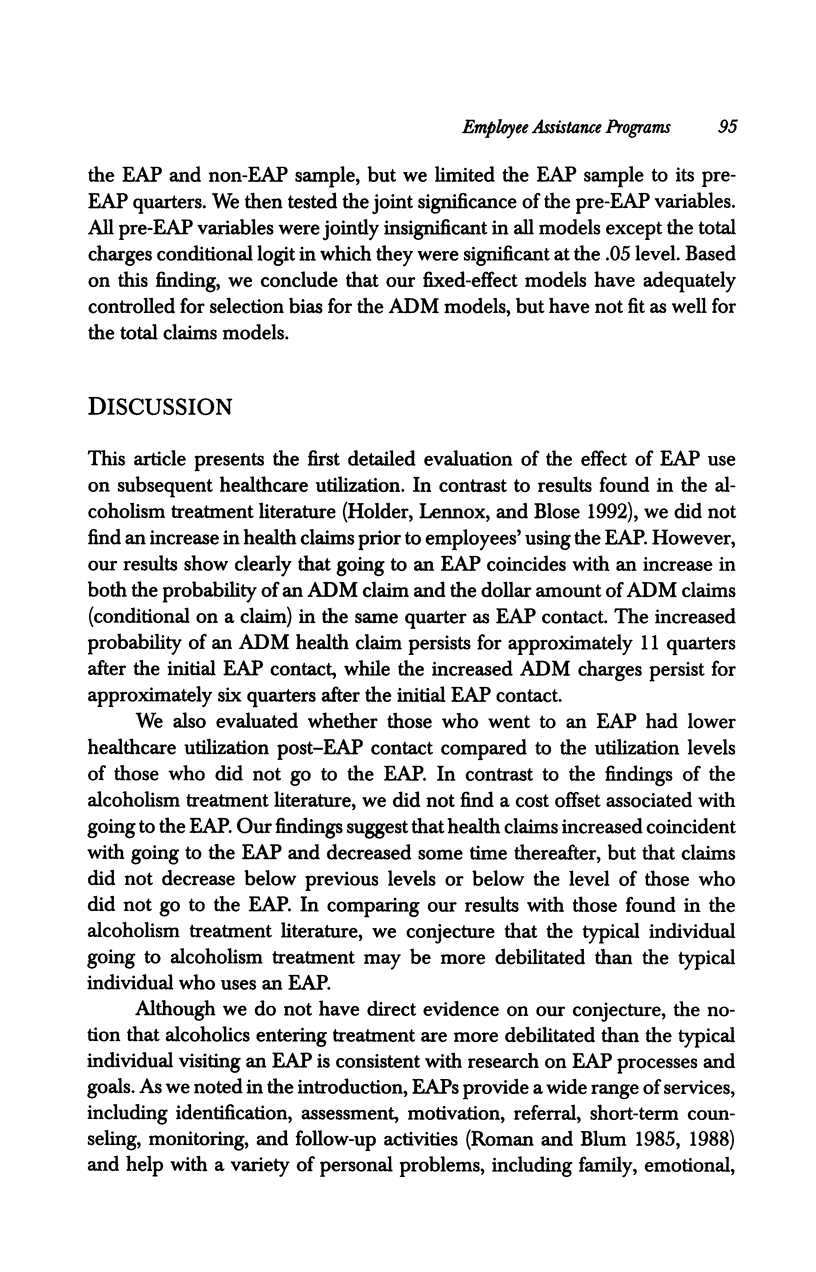
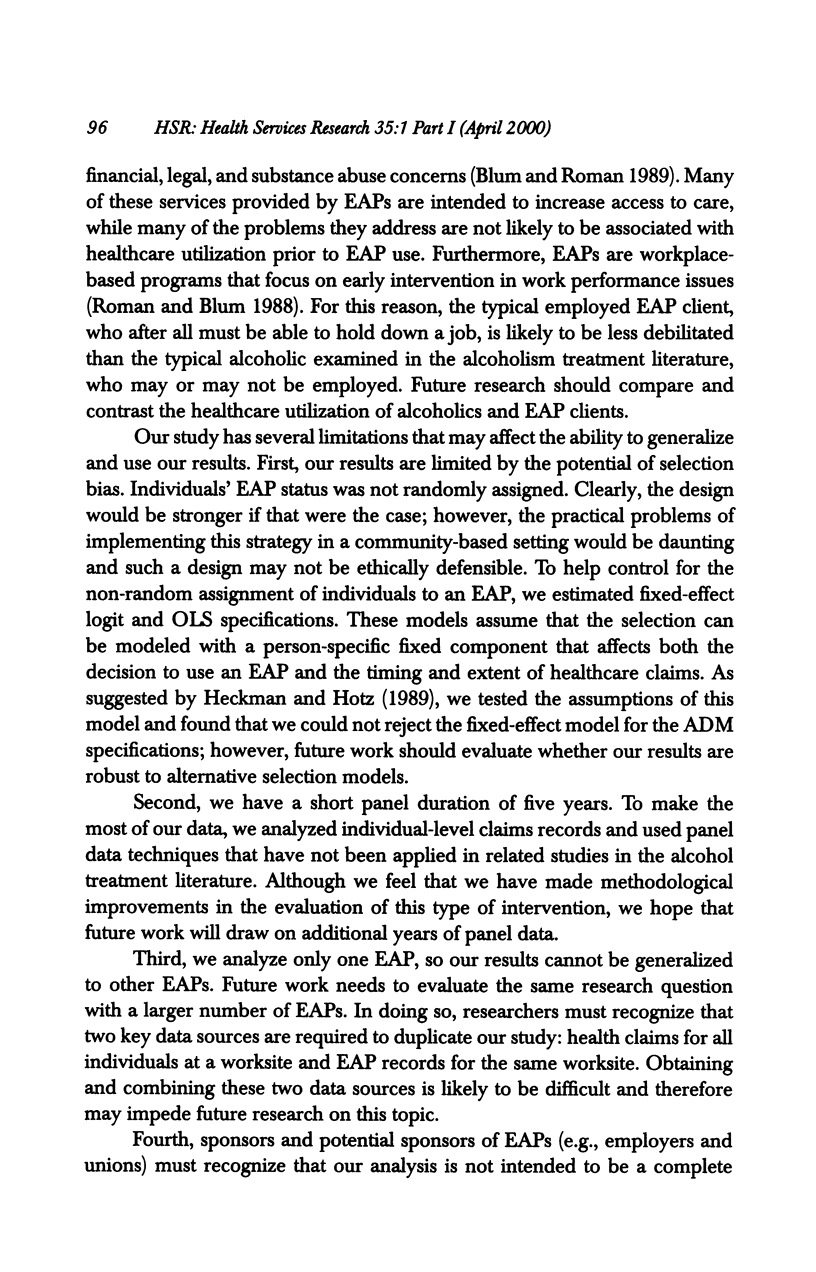
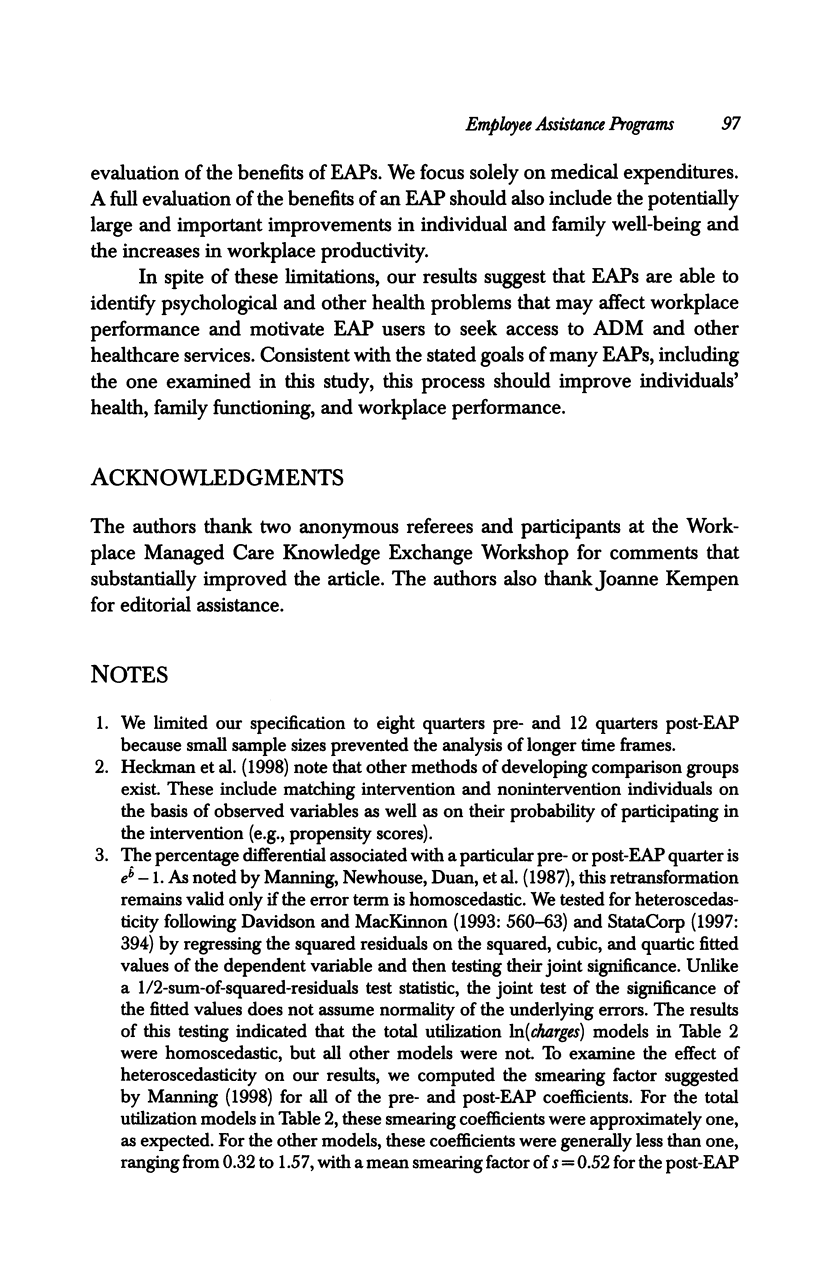
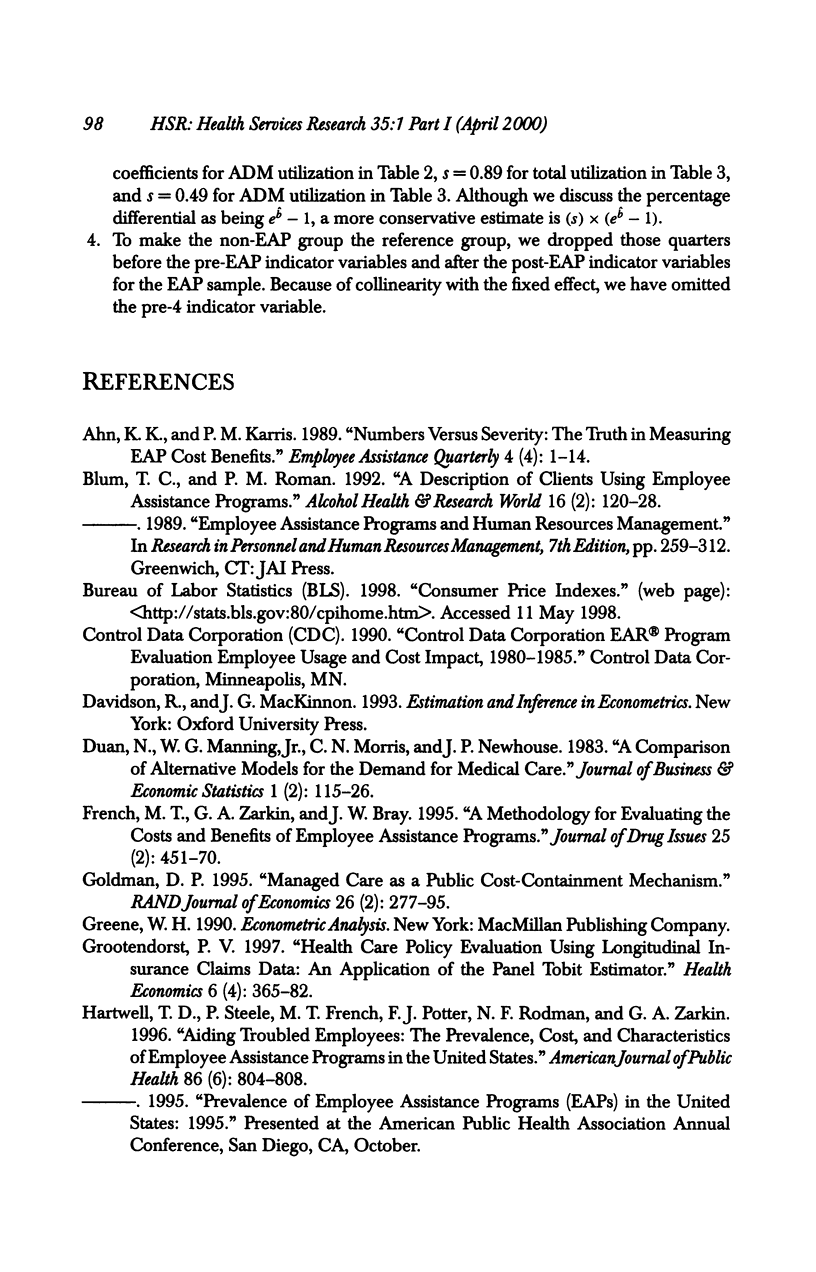

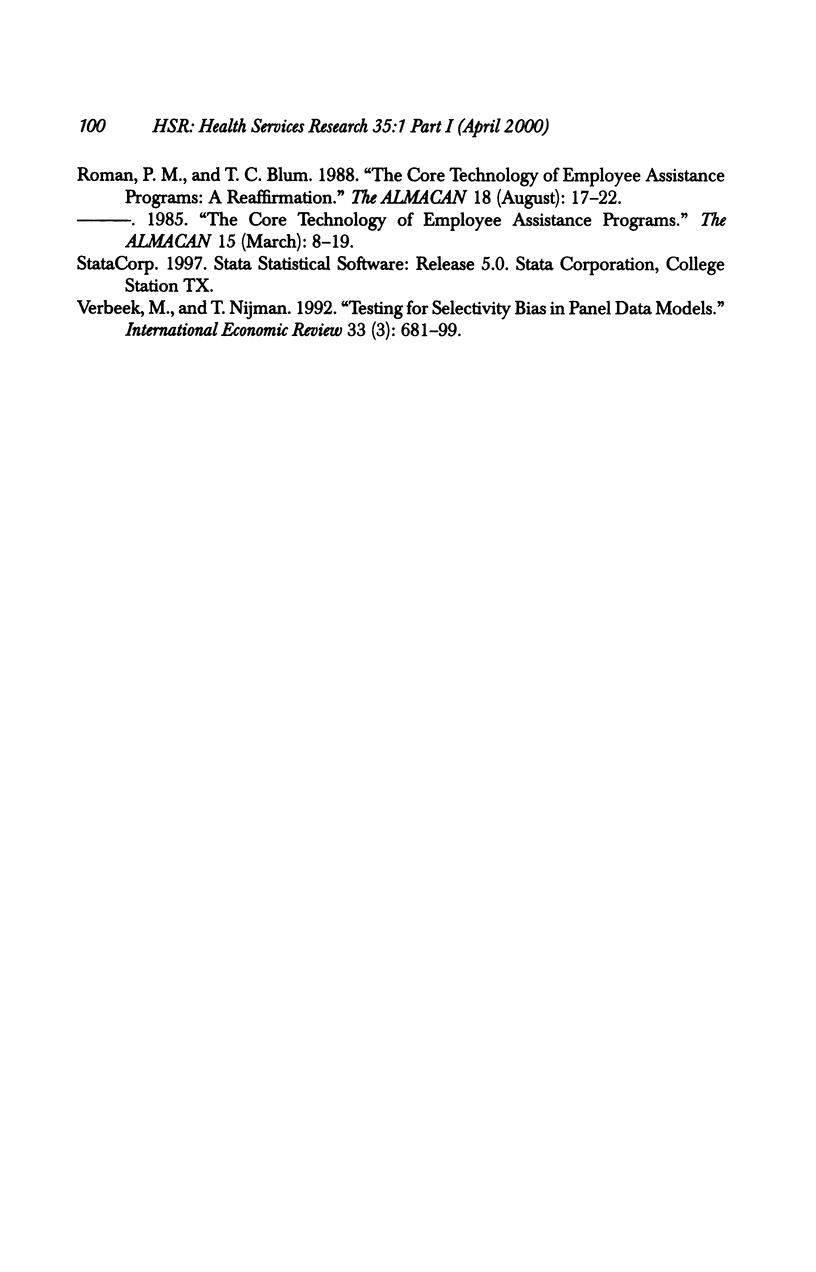
Selected References
These references are in PubMed. This may not be the complete list of references from this article.
- Grootendorst P. V. Health care policy evaluation using longitudinal insurance claims data: an application of the panel Tobit estimator. Health Econ. 1997 Jul-Aug;6(4):365–382. doi: 10.1002/(sici)1099-1050(199707)6:4<365::aid-hec279>3.0.co;2-e. [DOI] [PubMed] [Google Scholar]
- Hartwell T. D., Steele P., French M. T., Potter F. J., Rodman N. F., Zarkin G. A. Aiding troubled employees: the prevalence, cost, and characteristics of employee assistance programs in the United States. Am J Public Health. 1996 Jun;86(6):804–808. doi: 10.2105/ajph.86.6.804. [DOI] [PMC free article] [PubMed] [Google Scholar]
- Holder H. D., Blose J. O. The reduction of health care costs associated with alcoholism treatment: a 14-year longitudinal study. J Stud Alcohol. 1992 Jul;53(4):293–302. doi: 10.15288/jsa.1992.53.293. [DOI] [PubMed] [Google Scholar]
- Manning W. G., Newhouse J. P., Duan N., Keeler E. B., Leibowitz A., Marquis M. S. Health insurance and the demand for medical care: evidence from a randomized experiment. Am Econ Rev. 1987 Jun;77(3):251–277. [PubMed] [Google Scholar]
- Manning W. G. The logged dependent variable, heteroscedasticity, and the retransformation problem. J Health Econ. 1998 Jun;17(3):283–295. doi: 10.1016/s0167-6296(98)00025-3. [DOI] [PubMed] [Google Scholar]


